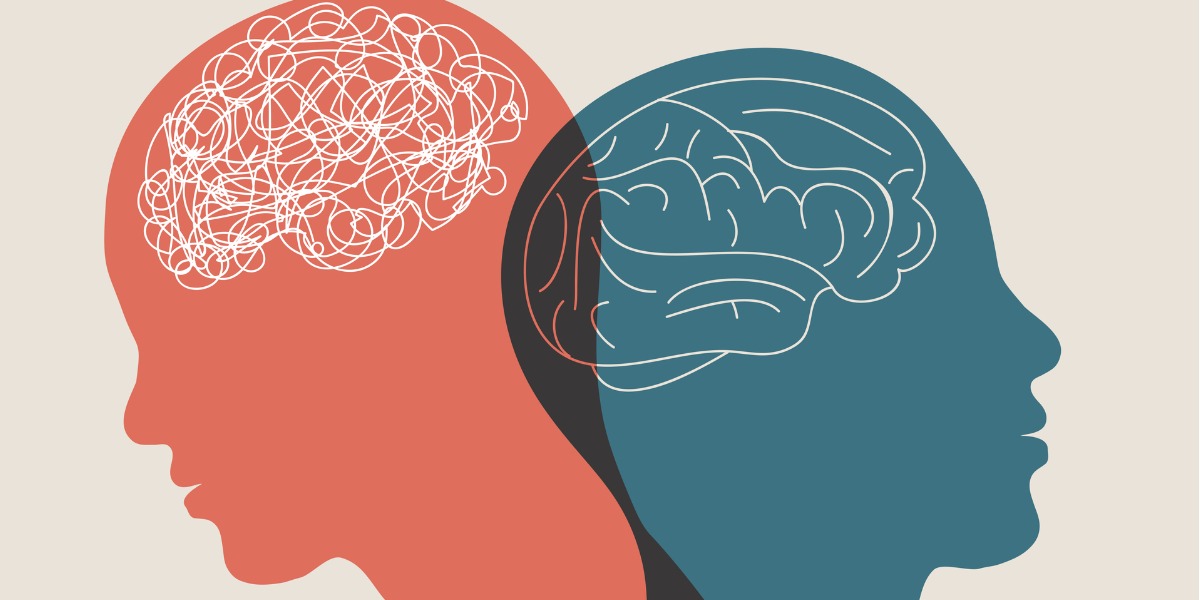Mental health experts typically do not recognize clear gender differences in the prevalence of bipolar disorder. However, recent research suggests that bipolar disorder diagnoses show a new trend, and skew toward female patients.
A meta-analysis published in the International Journal of Bipolar Disorders addresses this topic. Features of this article include:
- Analysis of 10 studies published between 2011-2020.
- Large sample sizes – a minimum of 1000 individuals with bipolar disorder in each study, for a total of 47,878 patients.
- A focus on studies that examined both BD-1 and BD-2 patients.
The team that conducted this analysis noted all 10 studies demonstrated “a predominance of female gender in their samples of bipolar patients.” Women accounted for:
- 55.1%-66% of patients with any type of bipolar disorder.
- 55.1%-58.6% of patients with bipolar I.
- 64.95%-66.10% of patients with bipolar II.
Neither the authors of this study nor any other reputable sources suggest this shift represents a change in who’s at risk for bipolar disorder. Rather, most experts suggest this apparent imbalance could be related to factors such as:
- Girls and women becoming more likely to seek treatment than are boys and men.
- Improved ability of clinicians to accurately diagnose bipolar disorder in women and girls.
An increased understanding of how symptoms of bipolar disorder can appear in female patients compared to male patients may also contribute to the changing gender differences in the prevalence of bipolar disorder.
Types of Bipolar Disorder
The article we discuss above includes references to different types of bipolar disorder. The fifth edition of the Diagnostic and Statistical Manual of Mental Disorders (DSM-5), identifies three forms of this condition: bipolar I disorder, bipolar II disorder, and cyclothymic disorder.
These three types are differentiated by the nature and duration of symptoms that a person experiences:
- Bipolar I disorder is characterized by manic episodes. These include periods of at least one week when a person will experience dramatic increases in energy, motivation, and self-confidence (to the point of grandiosity). Manic episodes are also characterized by a lack of need for sleep, racing thoughts, and excessive talkativeness. During a manic episode, a person may behave impulsively and recklessly in areas that can be extremely harmful, such as gambling, spending, substance abuse, and unsafe sex.
- Bipolar II disorder involves hypomanic episodes and major depressive episodes. A hypomanic episode is similar to a manic episode, except it may last for only four days. During a major depressive episode, a person may struggle with a lack of energy, disrupted sleep and appetite, low self-esteem, pervasive sadness, and an overwhelming sense of hopelessness. These symptoms will last most of the day, most days, for at least two weeks.
- Cyclothymic disorder involves hypomanic symptoms and depressive symptoms, with neither type of symptom lasting long enough to qualify as a full episode. People who have this form of bipolar disorder will experience symptoms on and off for a period of at least two years.
Gender Differences in Bipolar Disorder Symptoms & Effects
As we mention above, one person’s experience with bipolar disorder can be quite different than someone else’s. The differences can be due to a several factors, such as:
- Bipolar type
- Symptom severity
- Presence or absence of medication
- Effectiveness of personal support network
Research indicates gender affects the experience of bipolar disorder. Gender-influenced variations, as reported by the International Bipolar Foundation (IBF) include:
Age:
The average age at which people begin to experience symptoms of bipolar disorder is about five years earlier among men than among women.
Symptom Type:
Mania is typically the primary symptom among men who have bipolar disorder.
Comorbid Psychiatric Disorders:
Depression is more commonly the primary symptom among women who have bipolar disorder.
Cycle Duration:
Women are more likely than men to cycle rapidly various symptoms.
Co-occurring Substance Use:
Men who have bipolar disorder are more likely to engage in substance abuse than are women who have this condition.
Hypomania/Mixed Episodes:
Women are more likely than men to be diagnosed with hypomanic or mixed episodes.
One of the more concerning aspects of bipolar disorder is an increased risk of suicidal thoughts and actions. Experts estimate suicide risk among people with bipolar disorder as 10-30 times higher than people without a mental illness.
A meta-analysis in the October 15, 2023, issue of the Journal of Affective Disorders found the following differences in suicidal behaviors among men and women with bipolar disorder:
- Suicidal ideation:
- Females: 44%
- Males: 48%
- Attempted suicide:
- Females: 9.3%
- Males: 6.7%
- Suicide mortality rate:
- Females: 0.3%
- Males: 0.7%
Note: If you or someone in your life experiences thoughts of suicide, please get help immediately. In the United States, contact the 988 Suicide & Crisis Lifeline by calling 988 or visiting www.988lifeline.org. Trained professionals who can assess your needs and connect you with appropriate resources in your area staff these lines 24/7/365.
Gender Differences in Bipolar Disorder: Impact on Treatment
This information on gender differences in bipolar disorder begs a question:
Since there appear to be clear differences in how men and women experience the symptoms of bipolar disorder, does this mean people of different genders respond differently to treatment?
According to a March 2015 study in the Journal of Affective Disorders, data suggests no significant differences in how men and women with bipolar disorder respond to medication, electroconvulsive therapy (ECT), psychoeducation, and therapy.
“By and large, there is no clear-cut evidence suggesting that treatment response to these modalities differs between men and women, and hence no justification for adjusting the bipolar disorder treatment according to gender,” the researchers wrote.
However, this doesn’t mean that gender is not a factor in treatment for bipolar disorder. After evaluating data from more than 7,000 Swedish patients with bipolar disorder, the research team found “distinct gender differences” in the types of treatment that patients received.
“Women are more likely to be treated with antidepressants, ECT, lamotrigine, benzodiazepines, and psychotherapy,” they wrote. “While men are more likely to be treated with lithium.”
A June 2022 Psychiatric Times article supported this finding, adding that even though men are more likely to receive lithium for bipolar disorder, studies suggest that women seem to respond better to the drug.
The authors of the Psychiatric Times article also reported that women who experienced depressive symptoms associated with bipolar disorders received “significantly fewer antidepressant drug trials” than did male patients before their healthcare providers recommended ECT.
The Value of Individualized Care
The many potential gender differences in how people are impacted by bipolar disorder underscore the necessity of finding a treatment provider that offers personalized planning and customized care.
At Crownview Psychiatric Institute, we understand that no two people will experience bipolar disorder in an identical manner, and we’re committed to developing the individualized solutions that will address the full scope of each person’s unique needs.
Our treatment approach incorporates a wide range of therapies and educational services, along with true wraparound support, all within a safe and welcoming community-like environment. Guided by the principles established in the Unified Protocol for Transdiagnostic Treatment of Emotional Disorders, we offer the care and structure that patients need to overcome core vulnerabilities, make necessary lifestyle changes, and develop essential skills.
We also work closely with each patient to help them develop realistic, achievable goals and determine what a healthier and more independent future looks like to them.
To learn more about our dynamic programming for people who have bipolar disorder and other complex mental health concerns, please visit our Contact Us page or call us today.


 Gianna Melendez
Gianna Melendez Jodie Dahl, CpHT
Jodie Dahl, CpHT